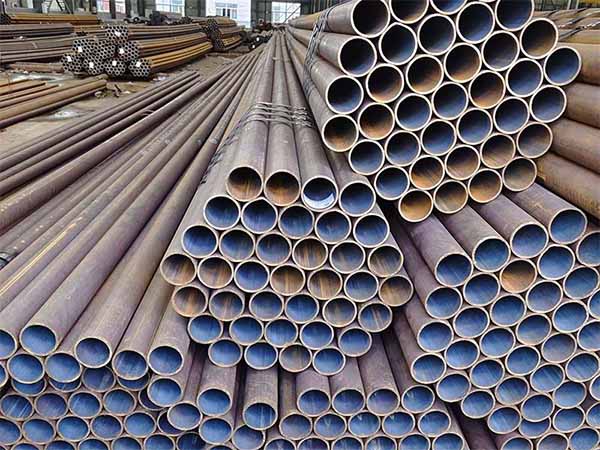
2. Chemical composition analysis
|
|
Carbon max.% |
Manganese % |
Phosphorous,max.% |
Sulfur,max.% |
Silicon,min.% |
Chrome,max.% |
Copper, max.% |
Molybdenum, max. % |
Nickel, max.% |
Vanadium, max.% |
|
Grade B |
0.30* |
0.29 to 1.06 |
0.035 |
0.035 |
0.10 |
0.40 |
0.40 |
0.15 |
0.40 |
0.08 |
|
*Unless otherwise specified by the purchaser, for each reduction of 0.01% below the specified carbon maximum, an increase of 0.06% manganese above the specified maximum will be permitted up to a maximum of 1.65% (1.35% for ASME SA106). |
||||||||||
3. Mechanical property analysis
|
Mechanical property indicators |
Grade B requirements |
|
Yield strength (Rp0.2) |
≥ 205 MPa |
|
Tensile strength (Rm) |
415–550 MPa |
|
Elongation (A) |
≥ 30 % |
Different manufacturing methods (hot rolling, hot drawing, forging) have a slight impact on the performance. The final data shall be subject to the Mill Test Report.
4. Manufacturing process
The manufacturing process of ASTM A106 Grade B seamless pipe usually adopts the method of hot rolling or cold drawing for pipe production. The steel grade should be killed steel, and the steel casting method can adopt traditional furnace, oxygen top-blown converter or electric furnace + vacuum treatment, etc.
NPS 1½ "(≈DN40) and below: Can be hot-rolled or cold-drawn. After cold drawing, normalizing heat treatment must be carried out.
NPS ≥ 2 ": Hot rolling is mandatory and no subsequent heat treatment is required.
This type of production process makes the pipe grains fine and controllable, facilitating subsequent welding, forming and processing.
5. Dimensions, specifications and tolerances
Size range: NPS ¼ "to 36" (i.e., DN6 - DN900 and above, some suppliers can reach 60 ");
Wall thickness Schedule: SCH 10/20/30/40/80/160, STD, XS, XXS, etc. The maximum wall thickness can reach 5.500 "(≈140 mm).
Tolerance description
Wall thickness: No point shall be less than 12.5% of the specified value.
Outer diameter: Relative to the standard value, the upper and lower limits must not exceed ±1%.
The weight of a single pipe can be 10% higher than the specification value, but not less than 96.5% of the specification value.
6. Detection and Testing
ASTM A106 Grade B seamless tubes are subject to rigorous quality tests, including:
Tensile test (commonly used for ≥ NPS 8, for confirming strength);
Cold bending test (NPS 2 or below, 90° bending at 12× pipe diameter qualified; Or it can be bent at 180° under 8× pipe diameter and is qualified for spiral coil.
flattening (flattening) test (NPS 2½ "and above);
Hydrostatic test: The stress generated by the test pressure is 60% of the nominal yield strength. NPS ≤ 3 "shall not exceed 2500 psi, NPS > 3" shall not exceed 2800 psi, and pressure holding shall be ≥ 5 seconds.
In addition, non-destructive testing procedures such as ultrasonic (UT), eddy current (ET), magnetic particle, and macro-etching (macro-ETCH) can be carried out as needed.
7. Application scenarios
Due to its high-temperature pressure-bearing performance and good weldability, ASTM A106 Grade B seamless tubes are widely used in:
High-temperature and high-pressure conveying pipelines (including furnace tubes and heat exchanger interfaces) in oil and gas refining and chemical plants
Boiler drum and reheater conveying branch pipes in thermal power plants
High-pressure boilers and superheater systems for shipbuilding and Marine engineering
Medium transportation, circulation and external pipeline network in chemical and refining equipment
Normal temperature fluid delivery pipelines (direct water supply, air conditioning systems, HVAC systems in high-rise buildings), etc.
Summary
ASTM A106 Grade B is a seamless carbon steel pipe with high temperature pressure resistance, good ductility and economy, suitable for medium and high pressure piping systems below 400 °C. Its strict chemical and mechanical regulations, in combination with NDE and process quality control, ensure safety and stability in key fields such as power generation, petrochemicals, boilers, and shipbuilding.